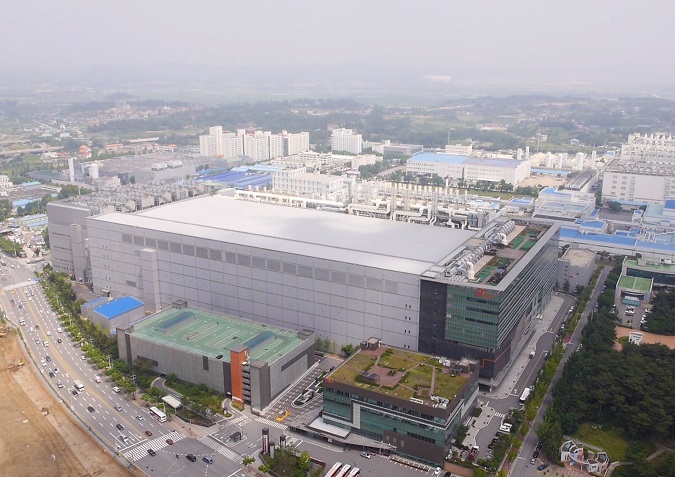
This file photo taken Feb. 1, 2023, shows the corporate logo of South Korean chipmaker SK hynix Inc. at its headquarters in Icheon, south of Seoul. (Yonhap)
SEOUL, Feb. 1 (Korea Bizwire) — SK hynix Inc. said Wednesday it swung to a deficit in the fourth quarter due to the global chip market’s slowdown amid weak demand and oversupply.
The world’s second-largest memory chip maker logged an operating loss of 1.7 trillion won (US$1.37 billion) for the three months ending in December, compared with a profit of 4.21 trillion won a year ago.
It was the South Korean chipmaker’s first quarterly operating loss since the third quarter of 2012.
Its net loss came to 3.52 trillion won, swinging from a profit of 3.31 trillion won a year earlier.
Sales fell 37.8 percent to 7.69 trillion won during the three-month period.
“With uncertainties still lingering, we will continue to reduce investments and costs, while trying to minimize the impact of the downturn by prioritizing markets with high growth potential,” the company said in a statement.
SK hynix makes most of its profits from selling memory chips.
But the macroeconomic woes, including the ongoing war between Russia and Ukraine, soaring inflation and rising interest rates, led consumers to tighten their spending on electronics that need such semiconductors.
The company said market conditions have significantly deteriorated, as PC and smartphone manufacturers, major buyers of DRAM and NAND flash, moved to deplete their inventories and cut back on spending.
“Our customer inventories are close to levels that we observed during the 2019 down cycle and supplier inventories combined, that would bring the overall industry inventory level at a record high,” SK hynix said during an earnings call Wednesday, with server inventory relatively high compared with those of more consumer-oriented segments like the mobile sector.

This photo provided by SK hynix Inc. shows the chipmaker’s plants in Cheongju, some 140 kilometers south of Seoul.
In October, SK hynix said it will reduce its investment by slightly more than half this year from last year’s 19 trillion won, citing a precipitous fall in demand.
On Wednesday, it said it sticks by the decision but will continue to invest in its core products, including DDR5, the next-generation standard for DRAM.
On the possibility of changing its plan to cut investment, the company said it would depend on market development.
“But at the moment, we are not seeing any significant market change that would merit a change to our direction on capital expenditure. So at the moment, given what we know right now, we are not considering any further capex cuts,” it said.
DRAM prices are projected to drop 13-18 percent and NAND flash by 10-15 percent in the first quarter, research firm TrendForce said, as “Inventory pressure on suppliers remains significant due to the persistently weak demand for consumer electronics.”
While the industry downturn is forecast to persist in the first half, SK expected market conditions to “gradually improve into the latter part of the year.”
“Industry experts do not expect an increase in supply of memory chips as market players are planning to reduce investments and production, which will lead the inventories to peak within the first half,” it added.
It also said Intel’s recent launch of a new server CPU and growing demand for artificial intelligence-based memory chips are expected to help the company make a quick turnaround.
For all of 2022, SK hynix reported a net profit of 2.43 trillion won, down 74.6 percent from a year earlier.
The operating income for the year was 7 trillion won, down 43.5 percent on-year. Annual sales rose 3.8 percent to 44.64 trillion won.
(Yonhap)






